Ryusuke Hamaguchi’s Drive My Car is a road trip in more ways than one. What started out as a cinematic adaptation of Haruki Murakami’s eponymous short story took on a life of its own as the filmmaker added original characters, shifted the location and refined the script, eventually polishing it into the three-hour movie that was awarded Best Screenplay at Cannes in 2021 and Best International Feature Film at the Academy Awards in 2022.
Uncle Vanya in Hiroshima
Although the short story was originally set in Tokyo, congested traffic in the Japanese metropolis made it less suitable for filming long driving sequences on the road. The initial plan was to set the film in Busan, South Korea, but Covid restrictions in 2020 made that impossible. So, the crew finally decided to relocate the main action to Hiroshima. As the film continued to adapt to the new city, the expert Hiroshima Film Commission offered insightful recommendations for particular locations, such as the idiosyncratic incineration plant.
Drive My Car opens with an extended prologue in Tokyo, which introduces us to the actor and stage director Yusuke Kafuku (Hidetoshi Nishijima) and his intense, intimate relationship with his wife Oto (Reika Kirishima). After she dies suddenly, he is tormented by grief and regret, and breaks down while performing the title role in the play Uncle Vanya.
A few years later, Kafuku travels to Hiroshima to direct an international, multilingual production of Uncle Vanya for a theater festival, and the emotional core of Drive My Car begins in earnest. Here are some of the key locations in Hiroshima where the movie was finally shot.
International Conference Center Hiroshima
Where Kafuku first meets his Hiroshima festival hosts on the second floor. To his dismay, they inform him that he must be chauffeured around in his own car for insurance reasons. Down in the garage, he is introduced to his young female personal driver Misaki Watari (Toko Miura).
Located inside the Peace Memorial Park 平和記念公園 right across from the museum, the current International Conference Center Hiroshima 広島国際会議場 was rebuilt in 1989 based on the Hiroshima City Public Hall designed by acclaimed architect Kenzo Tange. But the building’s most compelling characteristic from a driver’s standpoint may be its signature gray brick roundabout driveway.
 International Conference Center Hiroshima
International Conference Center Hiroshima
ESTABLISHMENT POINT_OF_INTEREST- Japan, 〒730-0811 Hiroshima, Naka Ward, Nakajimachō, 1−5 3階
- ★★★★☆
Peace Memorial Park
Where the actors go to rehearse their parts together face to face in the open air, after many hours spent reading their lines at the table indoors. They find a secluded area off to the side of the main paths of the park just behind the Conference Center, shaded by trees on a carpet of autumn leaves.
 Peace Memorial Park - Hiroshima
Peace Memorial Park - Hiroshima
ESTABLISHMENT PARK POINT_OF_INTEREST- 1 Nakajimacho, Naka Ward, Hiroshima, 730-0811, Japan
- ★★★★☆
Bar Cedar
Where the young actor Koji Takatsuki (Masaki Okada) invites Kafuku for a drink and confronts him about his incongruous decision to cast him as Uncle Vanya. After confessing his unrequited love for Oto on a previous night at another bar inside the Grand Prince Hotel, tension grows between the two actors.
 Bar Cedar
Bar Cedar
BAR ESTABLISHMENT POINT_OF_INTEREST- Japan, 〒730-0036 Hiroshima, Naka Ward, Fukuromachi, 2−23 2f
- ★★★★☆
 Grand Prince Hotel Hiroshima
Grand Prince Hotel Hiroshima
ESTABLISHMENT LODGING POINT_OF_INTEREST- 23-1 Motoujinamachi, Minami Ward, Hiroshima, 734-8543, Japan
- ★★★★☆
Shintenchi Park
Where Watari waits for the two men a few blocks away in a small outdoor parking lot, and where Takatsuki momentarily disappears during what we later learn was a violent beating in the park, for which he will be arrested during a dress rehearsal.
Shintenchi Park 新天地公園 is a very central, compact community plaza in the heart of downtown Hiroshima. It’s known for its retro atmosphere, surrounded by trendy bars and restaurants, as well as large stores including Hiroshima Parco and Don Quijote, not to mention the timeless Okonomimura.
 Shintenchi Park
Shintenchi Park
ESTABLISHMENT PARK POINT_OF_INTEREST- 3-13 Nagarekawachō, Naka Ward, Hiroshima, 730-0028, Japan
- ★★★☆☆
Naka Incineration Plant
Where Watari takes Kafuku to show him her favorite quiet place to think. This is his request after learning that Takatsuki will no longer be available to play Uncle Vanya, and that the pressure is now on him to play the role himself, despite his anxieties. It’s an unexpectedly emotional sequence, as Watari begins to open up to Kafuku about her own past, and Kafuku begins to listen.
The Naka Incineration Plant’s Ecorium is a fascinating corridor with transparent factory walls leading straight through to the open port. It’s also the southernmost point on Hiroshima’s famous Axis of Peace that extends from the Atomic Bomb Dome through the Cenotaph for A-bomb Victims inside the park, the Peace Memorial Museum, the flame and the fountain, all the way down to Hiroshima Bay.
 Hiroshima Naka Incineration Plant
Hiroshima Naka Incineration Plant
ESTABLISHMENT POINT_OF_INTEREST- 1-chōme-5-1 Minamiyoshijima, Naka Ward, Hiroshima, 730-0826, Japan
- ★★★★☆
Drive Me To Mitarai
While in the film Kafuku requested accommodation about an hour’s drive away from their rehearsal space inside Hiroshima’s Peace Memorial Park, the actual journey to Mitarai, technically part of Kure, takes around 1.5 hours.
Tobishima Kaido
Where Kafuku’s iconic red Saab 900 Turbo hops across islands, bridges and tunnels on the way to his temporary accommodation during his residency in Hiroshima.
The highly scenic Tobishima Kaido とびしま海道 route across the Seto Inland Sea rivals the Shimanami Kaido for cyclists. Featured bridges include Akinada Ohashi, Kamagari Ohashi, Toyoshima Ohashi, and Toyohama Ohashi.
 Akinada Bridge
Akinada Bridge
ESTABLISHMENT POINT_OF_INTEREST- Kure, Hiroshima, Japan
- ★★★☆☆
 Kamagari Bridge
Kamagari Bridge
ESTABLISHMENT POINT_OF_INTEREST TOURIST_ATTRACTION- Shimokamagaricho Sannose, Kure, Hiroshima 737-0301, Japan
- ★★★☆☆
 Toyohama Bridge
Toyohama Bridge
ESTABLISHMENT POINT_OF_INTEREST TOURIST_ATTRACTION- Japan, 〒734-0102 広島県呉市豊浜町
- ★★★☆☆
 Toyoshima Ohashi Bridge
Toyoshima Ohashi Bridge
ESTABLISHMENT POINT_OF_INTEREST TOURIST_ATTRACTION- Toyohamacho Oaza Toyoshima, Kure, Hiroshima 737-0402, Japan
- ★★★★☆
Kangetsuan Shintoyo
Where Kafuku effectively stays and works on the theater script with a view of the sea from his second-floor window.
The refurbished house, Kangetsuan Shintoyo 閑月庵新豊, is actually a small villa that can accommodate guests with exquisite meals included, located in the heart of the Mitarai Townscape.
Mitarai Townscape
This diligently preserved Edo-period townscape of wooden merchant houses, shrines, stone piers and lighthouses is nestled at the remote end of the Tobishima Kaido on the island of Osaki-Shimojima. Situated in the middle of the Seto Inland Sea, Mitarai once flourished as a pivotal port town where seafarers stayed to wait for favorable tides and winds.
Several other sequences in the film were shot on location and from vantage points in this area.
 Townscape of Mitarai
Townscape of Mitarai
ESTABLISHMENT POINT_OF_INTEREST TOURIST_ATTRACTION- Yutakamachimitarai, Kure, Hiroshima 734-0302, Japan
- ★★★★☆
After 1945, Hiroshima was often associated with wartime images of nuclear devastation. Just as Kafuku and Watari finally rise from their ashes, the international success of Drive My Car has helped change the image of the deeply scarred city as a place of reconstruction, reconciliation, resilience, and rebirth.
See the Hiroshima Film Commission’s complete map of locations.
Read more articles about real-life locations in Japanese cinema below:
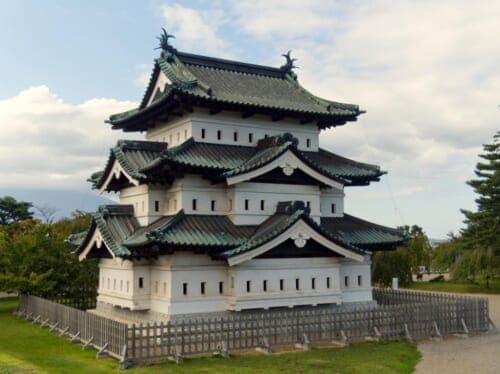
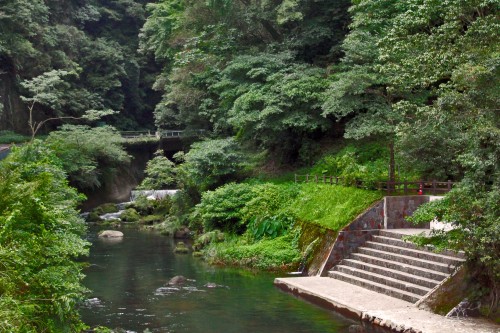
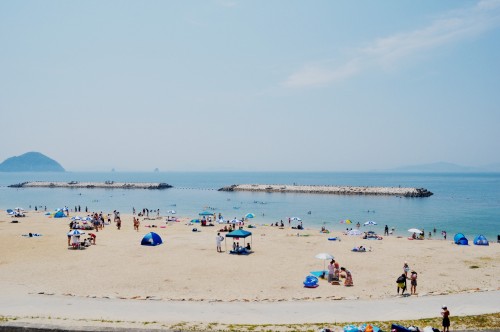
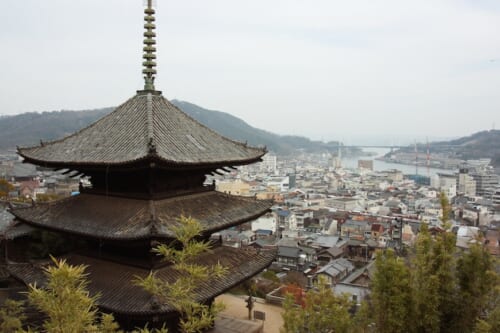
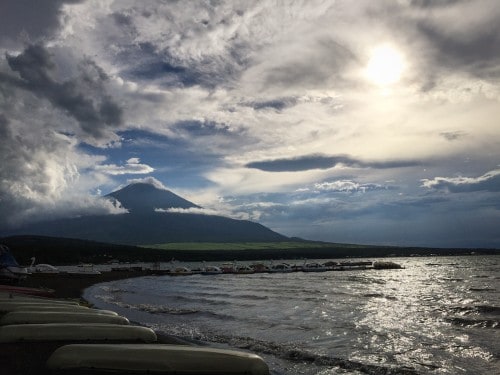


No Comments yet!